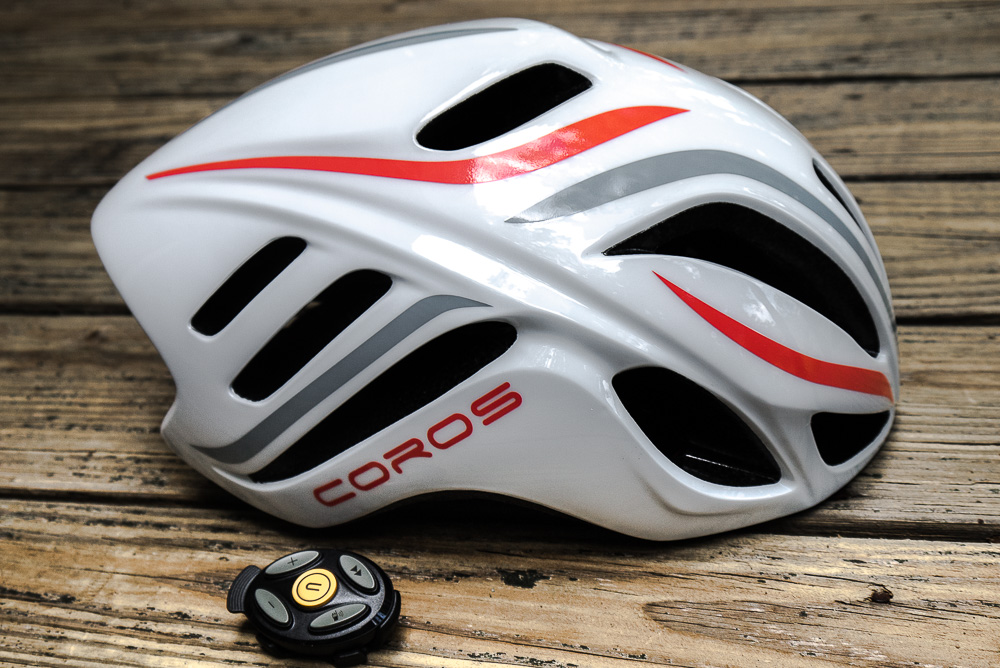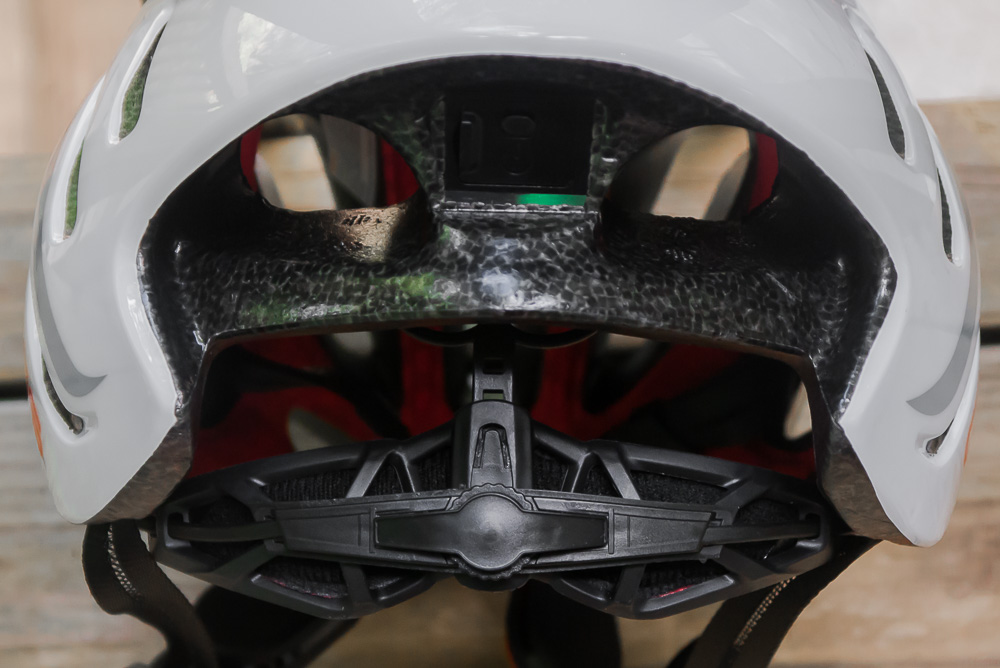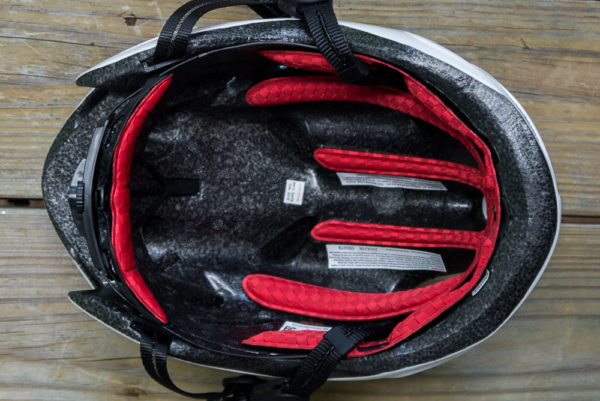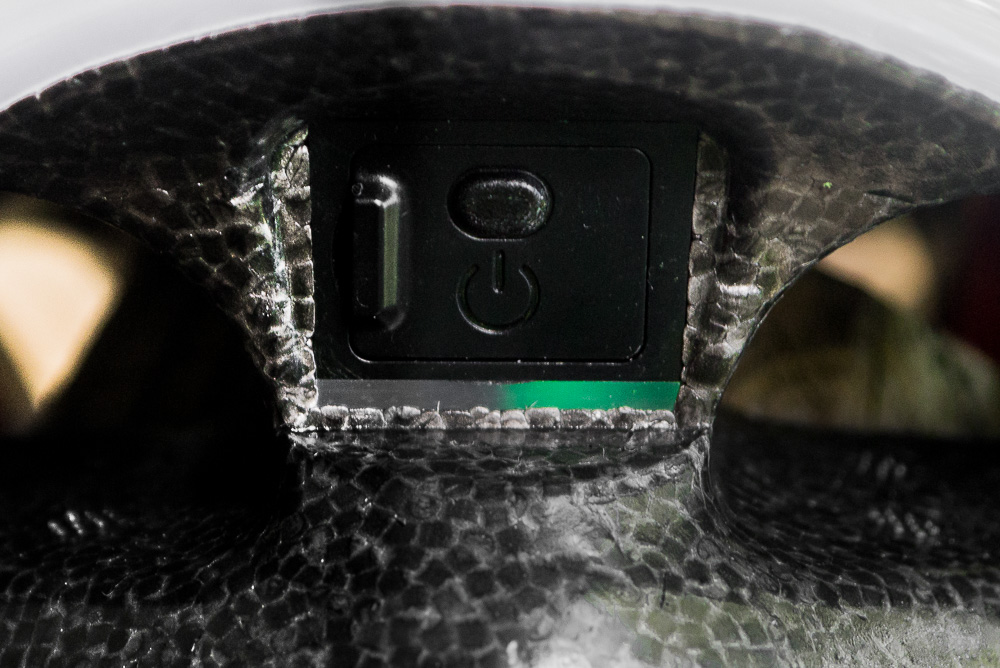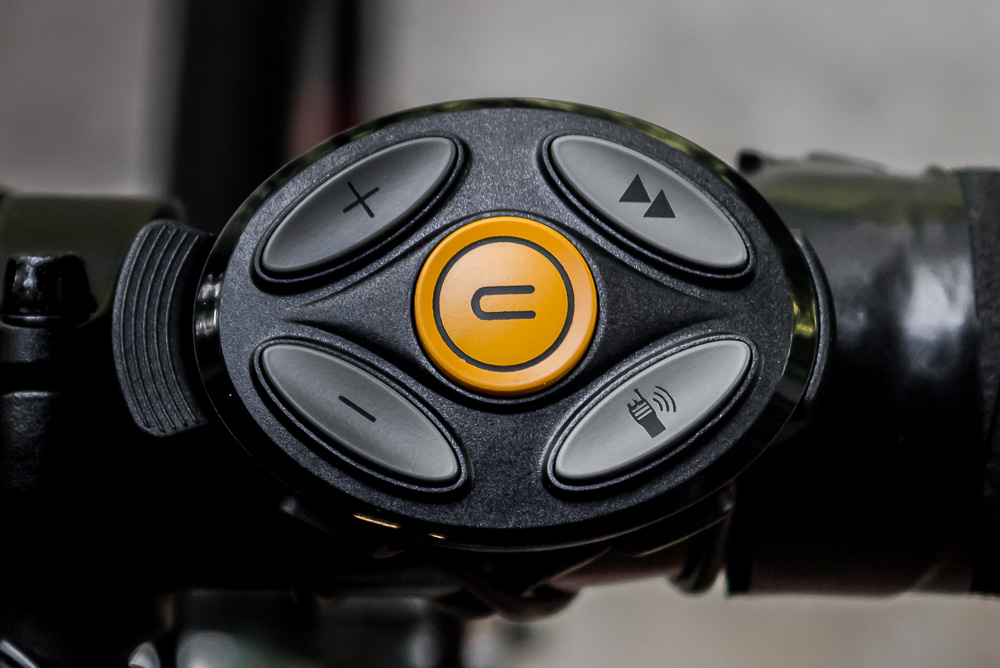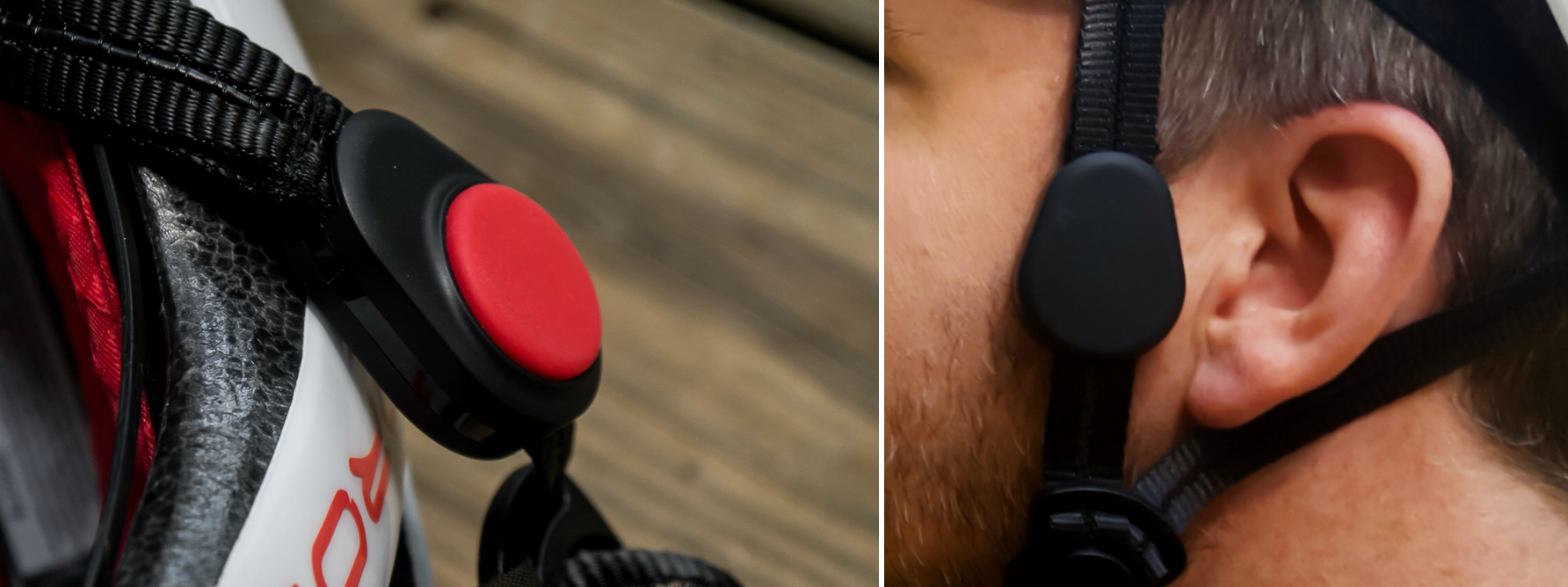There has been a tidal wave of technology flooding the bicycle industry trying to integrate the power of our hand-held computers (with phone service) to our riding experience. While many may think this sounds ludicrous, many of the potential soon to be cyclists expect this sort of standard because… well what don’t smartphones do for us nowadays? Coros sent me an early run of their Linx “smart helmet” to try out. The Linx takes many of the most commonly used functions provided by your phone and wraps them up in a safe, hands-free place around your head.
Stick with me here and see why this could be more of a benefit than you might think…
We get “first looks” often, but usually from a well-established manufacturer. Rarely do we get our hands on a practically finished product before they are available from a crowdfunding campaign. We see a ton of Kickstarters and post the ones that are worthy, (and even a couple that are outright bonkers like here and here). While some may be long shots, the Coros Linx might be something that actually takes off and according to their Kickstarter, is already has!
Okay, I know what almost all of you are thinking… because I was thinking the same exact thing. This goes against so many of the reasons I ride as I, like many, like to escape and enjoy the experience of riding. However, part of my position in writing information down for all to see, is to remain unbiased. Just because a product might not be my cup-o-tea, doesn’t mean it’s not a good product someone else might find useful. That said, despite thinking up front I wouldn’t be that all impressed with a “smart helmet”, I was frankly surprised how much I liked the functionality of the Coros Linx helmet once I gave it a try. Believe me, as a purist for the most part, I like to enjoy “the ride” without any gadgetry distracting me which includes using headphones, tracking every ride or posting selfies at the top of every climb. While I typically like to “disconnect” when I go out for a ride, like the same reason I might eat cake for breakfast one day, sometimes it’s okay to indulge. Sometimes it helps to have Lemmy help me up a climb.
The Coros Linx helmet doesn’t look that different from any other helmet. It’s not a road race or enduro ready helmet by any means, but it conforms to what I consider the average looking head protection for someone that commutes or does regular training rides. From the looks of the inside, I wasn’t sure how comfortable this helmet would be, but it fits my bean shaped head much better than most helmets on the market and wasn’t uncomfortable by any means. Another surprise was the weight. With all of the electronics built in, it only weighed about 5 ounces more than my lightweight road helmet and was still an ounce less than my mountain bike helmet (Bell Super).
In short, the weight was unnoticeable and unlike some helmets, it was perfectly balanced never feeling like it was tipping forward. The straps were comfortable and though the helmet fit really well, the back adjustable cage did not adjust low enough to cradle my occipital bone (the pointy area above where the back of your neck meets your noggin). It didn’t move around once secure and felt it would stay put if an impact took place, so likely only a minor issue. The Linx has a suitable amount of ventilation and did a fine job not letting my head feel suffocated so to speak.
Above is the power button to power it up and behind that little door above the green light is where you charge the helmet with the included micro USB cable. If anything keeps me from using a new gadget, it’s because it is complicated. More often than not, when I review any sort of technical product, I jump in blind without reading the instructions. Partially because “simplicity” is one of the most important traits a product should have to become successful… but mainly because I’m a guy and the Y chromosome prevents me from doing so. From the very start, I failed. To power the Linx up, you had to hold the button down a whole three seconds. While that might sound nit-picky, it seemed a little excessive. Once the green light lit up, a little robotic voice came on. “Pairing”… and like magic, my phone was connected. It also grabbed the bar mounted controller’s Bluetooth signal without me having to do anything. It took less than 30 seconds from the time I turned the helmet on and was listing to Pandora through the Linx’s speakers. The Linx stayed powered up on a 2-hour ride with the volume at a low but comfortable volume on a full charge and it is probably safe to assume you put some thought into that should you want the benefit of its crash detection feature on a longer ride.
This is where the Coros shines. It connects with your phone via Bluetooth and enables you to accept phone calls and gives you notifications for email, text, navigation, Facebook and your sound media of choice. When using the app, you can set it to give you verbal notifications of your current speed, distance, time riding, calories burned and time of day. While I would have liked to have the option to press a button to hear my stats, you can set which stats you would like to hear (so you don’t have to hear all of them), as well as how often you’re updated, (between 0.5 – 20 miles or 1 – 60 minutes between notifications). I would have liked to see an option for heart rate since so much went into this app, but for what it’s worth, if you choose to use another means to track your ride, the helmet & remote still function without using the app.
Maybe most importantly the Coros app and Linx helmet feature crash detection. Similar to how Garmin’s Edge Explorer we reviewed some time back, the helmet has an accelerometer built in that sends a signal to the Coros app which notifies your emergency contacts with your location via GPS unless you disable it in time. One other cool feature is if another rider is using a Coros Linx, there is a walkie-talkie function that allows a simple push button communication.
The bar mounted control module attaches to the bars via common silicone bands. While versatile, this is one trend I personally wish would go away. Silicone bands are cheap and I know they work, but it is such an unrefined solution by today’s standards. Unless you have a collection of mounts for each bike, it makes switching devices from bike to bike cumbersome and when that band eventually breaks, you’re screwed (unless you’ve reviewed several items in the past and have a drawer full of them)*okay… rant over* Not much wider than a 31.8mm bar, the control module is pretty idiot proof and worked really well. The “+” & “-” works the volume, the “►►” advances you to the next song, and the “walkie talkie” button speaks for itself. The big yellow button in the center accepts and ends calls as well as pauses the music.
I wasn’t sure what to think of the “bone conduction speaker”. I am pretty anti-headphones when riding anywhere except out in the middle of nowhere on a protected path. Like many, I develop thoughts of calm rage when my polite shouts go unnoticed as I attempt to “on your left” past earbud guy on the trail. However, these don’t go in or cover your ears. They sit just in front of your jaw bone about an inch away from your ear canal. The theory behind these is they are supposed to send sound via “sound conduction” through your skull rather than by obstructing your ear canal. Well, while they somewhat do that, I don’t think many will have their helmet straps tight enough for that to be very effective since the “conduction” requires the speaker to be lightly pressed against your cheek bone. Regardless of that, you can most definitely hear the ambient sound coming from the speaker so it does its job. Also worth mentioning, I’ve never found a set of earbud that would stay put, so the conduction speakers would make this a non-issue. One potential drawback is that anyone standing close to you can hear what you’re listening to, so if you’re a closet boy-band fan, you may want to choose your playlist wisely if riding with friends.
While riding, so as long as I didn’t have it cranked, I could hear just about everything I needed to hear. I never felt as though it masked the key things I need to pay attention to like cars or other riders asking to get around me. For those that do desire to listen to music while riding, this is a great alternative to earbuds. For those that despise riding with music… just don’t use it. Personally, I would like to see something like this in an off-road helmet to better communicate with friends in various spots of a trail system without having to stop, unbuckle your hydration pack and dig your phone out… or to listen to music to without being “that gal/guy”. Since I didn’t have two helmets to try out the walkie talkie I don’t know the range, but this could be a great “smack talk” feature on climbs and descents. The phone call feature works fine and works well enough that both parties can hear each other. Many may not use this often in a world of texting, but with this feature why skip riding on a beautiful day just because of a silly conference call you have to be on?
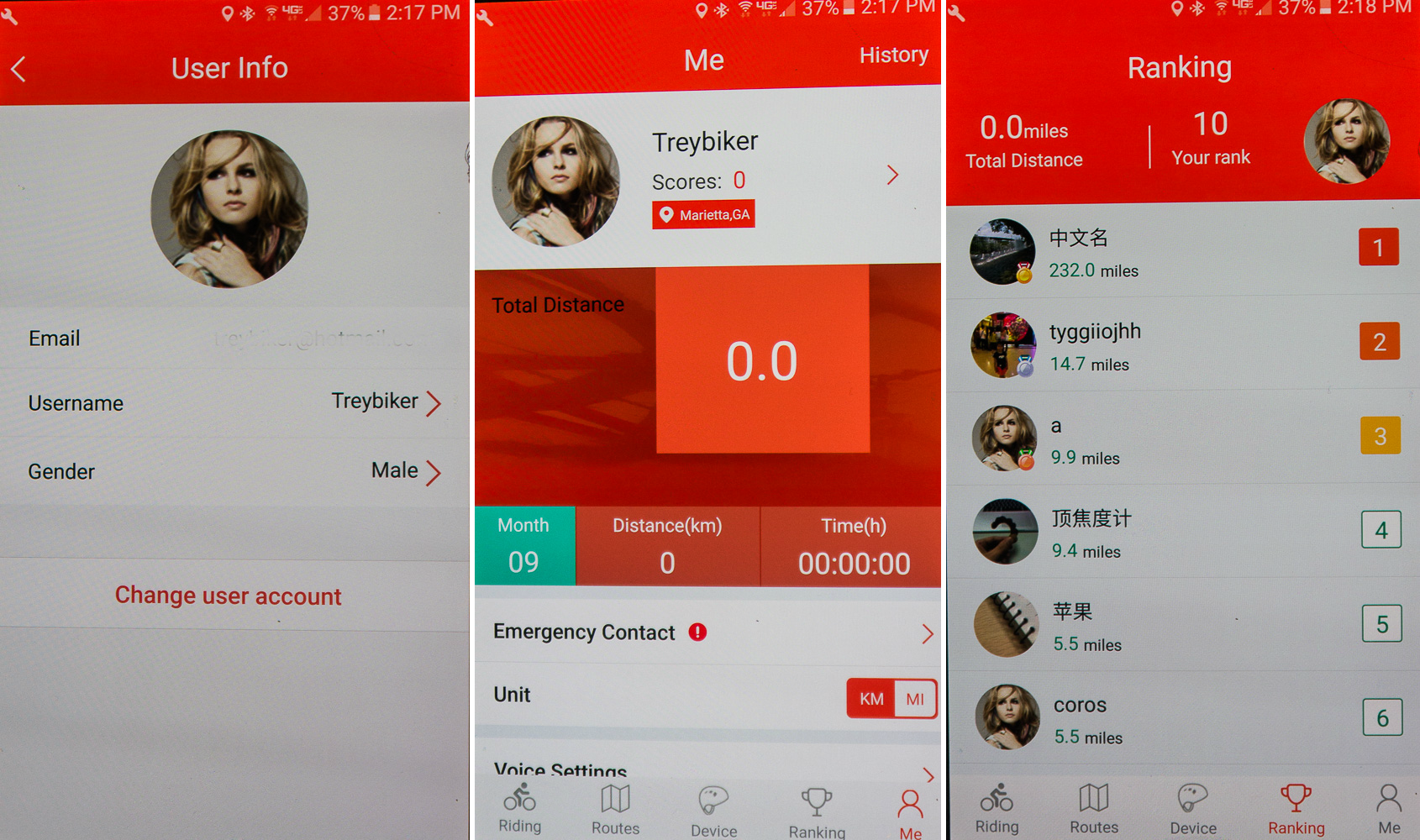
Yes, there’s an app for that! I thought it was funny that it gave me a default profile photo so I kept it, (and I’ve always wanted to be a blonde). The main function that may interest most is the crash detection that alerts your emergency contact of choice in case of an incident that requires attention. It also has a mapping and navigation function using Google Maps that lets you navigate, create & save routes. (if you want to navigate to a particular place just use good ol‘ Google maps and listen to the turn by turn directions). While many here are going to use Strava to track (and compete) their rides, the Coros app also tracks your total distance and logs & ranks it for others to see. New riders and non-enthusiasts would probably dig this and if they (like many) took to cycling, would probably go the way of the Strava eventually. In that case, I see this as a sort of gateway dru… I mean app to introduce people to becoming enthusiasts more connected with cycling.
Bottom line
As much as I thought I’d approach this as a trendy gadget, it really resembles what people today, and those that are new to cycling expect. Even an old purist dog like me sees quite a bit of value in this. Many will scoff at this like many did at suspension forks, droppers posts, carbon… E’bikes, but devices like this are the new standard in our society and in no way is cycling excluded. I’ve seen a crazy number of ideas and inventions incorporating smartphones try to pry their way into the cycling industry and while some are pretty far fetched, I can see this one taking off. Personally, I’d probably like to have this helmet on long solo rides. I never thought I’d listen to music while riding that often, but I don’t see a reason not to should I want to with the “conduction” speakers allowing me to hear things in my surrounding.
Beefs? Other than the positioning of the adjustable rear strap not being low enough on the back of my head, I would have liked to see a few LED lights on the back of this thing. It already has a battery and a feature that notifies someone in case of an incident, so I feel having a visible flashing light up at the highest point of a rider to increase visibility would have been a worthy safety feature to include. But hey, like any product, I can always find something nit picky that wasn’t perfect, so let’s chalk it up to that. Considering who this is aimed at and the purpose(s) it serves, I think most would get a kick out of it if they gave it a go.
While the Coros Linx helmet retails for $200, you can get an early bird deal on their kickstarter page for $120, (the $100 option is already sold out). That isn’t a bad deal at all considering the functionality so jump on it before it’s gone.
